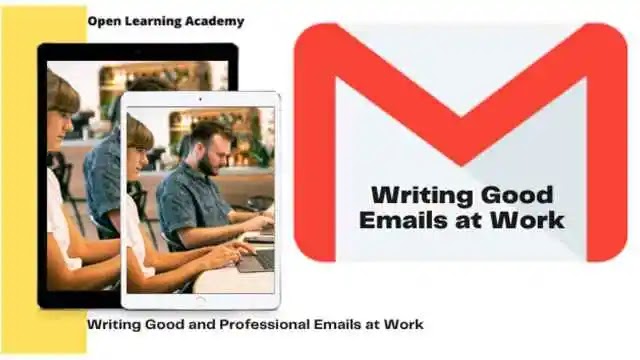Writing good email at work using email etiquette has become the main way that many business professionals communicate.
How to Write Good Emails at Workplace?
Most of us send many business emails on daily basis as a way of business communication. Every day you have emails going out to your boss, your line manager, colleagues, your vendors, and your professional contacts.
How to Use Email Etiquettes?
If you want to write good emails at work using email etiquettes, you should follow these steps:
- Use a transition or well wishes (optional)
- State your purpose
- Add your closing remarks
- End signature
2. Write a Clear Subject Line: The subject line of your email is the line that your recipient will see in their inbox before opening the email. Start writing the email subject line in a way that fastly communicates what you want the readers to do. And why they should open the email.
The professional email should start with a nice greeting. The greeting should vary according to the reason or amount of recipients of the email. So, you can start your email with any one of the following formal greetings:
If the relationship is more casual, you can simply say,
- Hi Ali, Hello,
- Hello there,
If you do not know the name of the person to whom you are writing, use any one of the following phrases:
- Dear Sir/Madam,
- To Whom It May Concern,
3. Use a transition or Well wishes (optional): The opening sentence or “first sentence” of the email. This may be well wishes if the recipient has not received an email from the sender in a long time. For example,
4. State your Purpose: You can begin your email by stating your purpose using any one of the following useful phrases such as:
- Make your purpose clear and then move into the main text of your email.
- Remember; to keep your sentences short and clear as people want to read emails quickly.
You will also need to pay attention to grammar, spelling, and punctuation in your email. This would help you to present a professional image of your organization.
5. Add your Closing Remark: The formal email closing tells a recipient what’s next. You should include a clear and specific call to action if you want your readers to do something. If you have already finished the discussion you have already had, end your email with a friendly note.
This will show them that you are willing to keep in touch with them. You should add some polite closing remarks to thank your reader with any one of the following useful phrases:
- Thank you for your help and feedback.
- Let’s keep in touch!
- Thank you for your patience and cooperation
- It would be great to jump into a quick call tomorrow to discuss...
- Thank you for your consideration” and then you can follow it up with,
- If you have any questions or concerns in this regard, please don’t hesitate to let me know
- I look forward to hearing from you.
End with a Signature: The last step is to include an appropriate closing with a signature and here are the polite phrases you can use to sign off your email:
- Best regards,
- Best,
- Sincerely,
- Yours truly,
- Respectfully,
- Kind regards,
- Thanks again,
You can also read email writing skills
Conclusion
Finally, emails are among the most commonly used means of communication in the world. They are fast, immediate, and allow you to interact with all kinds of businesses within and beyond the national boundaries.


